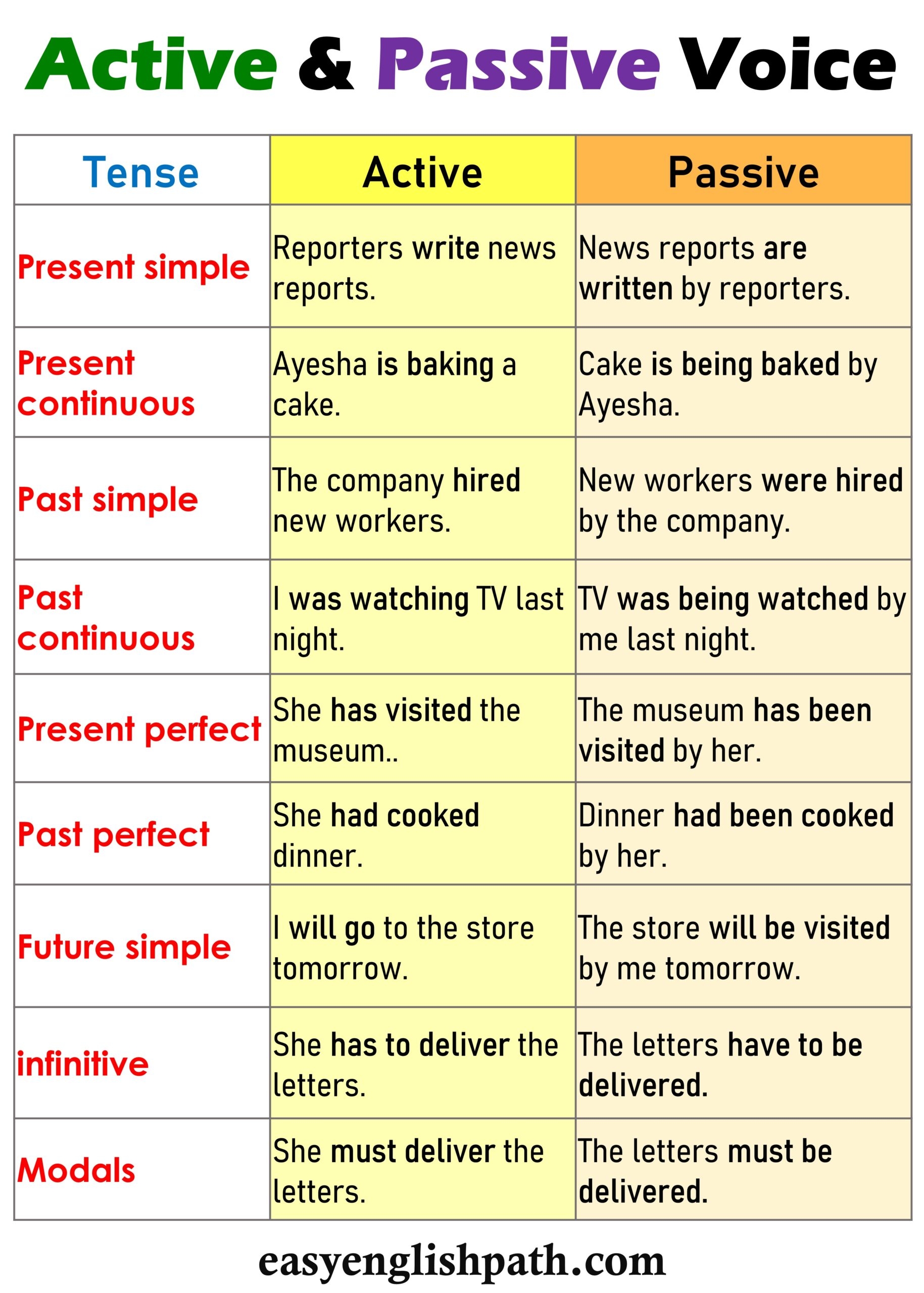English grammar is a crucial aspect of language learning. One of the fundamental concepts in English grammar is the differentiation between active and passive voice. Understanding when to use each can greatly improve the clarity and effectiveness of your writing.
Active voice is when the subject of the sentence performs the action. For example, “The dog chased the cat.” In this sentence, the subject (dog) is performing the action (chased). On the other hand, passive voice is when the subject of the sentence receives the action. An example of passive voice is “The cat was chased by the dog.” Here, the subject (cat) is receiving the action (chased).
Active and Passive English Grammar
Active voice is often preferred in English writing as it is more direct and concise. It clearly identifies the subject and the action they are performing, making the sentence easier to understand. Passive voice, on the other hand, can be useful when the focus is on the recipient of the action rather than the doer. It is also commonly used in scientific or academic writing.
When deciding between active and passive voice, consider the emphasis you want to place on the subject and the action. Active voice is generally more engaging and dynamic, while passive voice can be useful for creating a sense of formality or objectivity. It’s important to strike a balance between the two in your writing to effectively communicate your ideas.
Another factor to consider when choosing between active and passive voice is the clarity of the sentence. Active voice tends to be more straightforward and easier to follow, while passive voice can sometimes lead to confusion or ambiguity. Be mindful of the impact your choice of voice has on the overall coherence of your writing.
In conclusion, understanding the differences between active and passive English grammar is essential for effective communication. By mastering when to use each voice, you can enhance the clarity and impact of your writing. Experiment with both active and passive constructions to find the right balance for your specific writing style and purpose.
